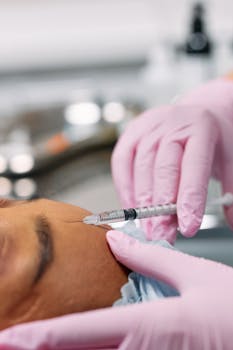Deciding between a mini tummy tuck and a full tummy tuck can feel overwhelming. Early in your research it’s helpful to understand the difference between mini tummy tuck and full tummy tuck so you can match the procedure to your goals, lifestyle, and anatomy. This guide breaks down the main technical distinctions, recovery expectations, scarring, typical costs, and candidacy criteria in clear, practical terms to help you talk with a board-certified plastic surgeon and make an informed choice.
Differences between a mini tummy tuck and a full tummy tuck
A mini tummy tuck (partial abdominoplasty) targets the lower abdomen below the belly button. It typically involves a shorter incision, less skin removal, and limited tightening of the abdominal muscles. A full tummy tuck (complete abdominoplasty) addresses the entire abdominal wall: excess skin above and below the belly button can be removed, the belly button may be repositioned, and the rectus muscles are often tightened across the midline. The choice depends on where excess tissue and laxity are located and how much contouring is needed.
Key surgical and recovery differences
Incision length and scope: A mini tuck uses a smaller incision often hidden low on the bikini line. A full tuck requires a longer incision from hip to hip and may include an incision around the navel. Muscle repair and skin removal: Full abdominoplasty commonly includes comprehensive muscle tightening (diastasis recti repair) and greater skin excision. Recovery time and downtime: Mini tucks usually mean a shorter operative time and faster initial recovery (less pain, fewer drains), while full tucks involve longer surgery, more swelling, longer use of drains or compression, and a lengthier return to strenuous activity.
Who is a better candidate for each?
Mini tummy tuck candidates often have localized lower abdominal bulging, good skin elasticity above the belly button, and isolated excess below the navel. Full tummy tucks suit people with widespread abdominal laxity, significant stretch marks, prior pregnancies with diastasis recti, or substantial weight loss. Age, skin quality, overall health, and expectations will influence which approach is safest and most effective.
Scarring, results, and realism
Both procedures leave scars, but a mini tuck scar is usually shorter. Scars fade with time and proper care, but realistic expectations about permanent marks and the final shape are important. Surgeons often show before-and-after galleries; if you’re looking for mini tummy tuck vs full tummy tuck pictures, use them to assess outcomes, not guarantees. Discuss scarring, potential complications, and photographic examples during your consultation so you know what results are typical for your body type.
Risks, costs, and long-term considerations
Complication rates vary with the extent of surgery. Full tucks carry higher short-term risks such as seroma, infection, or prolonged swelling, though these are uncommon with experienced surgeons. Costs reflect surgical complexity, facility fees, anesthesia, and geographic location. Weight stability and realistic lifestyle plans for maintenance are crucial. If you’re exploring broader health and surgical context, reputable medical summaries like the detailed overview of abdominoplasty on Wikipedia provide useful background information: Abdominoplasty — procedure overview.
Preparing for consultation and recovery tips
- Bring clear goals and a list of prior medical history, medications, and surgeries.
- Ask to see recovery timelines, typical pain management plans, and drain protocols.
- Plan for at least one to two weeks of limited activity and a gradual return to exercise over six weeks or more, depending on your surgeon’s guidance.
- Review wound care and scar management options in advance; nicotine cessation and stable weight improve healing and results.
Good skin-care and gentle, sustainable practices after surgery can support healing and scar appearance; for broader skin-friendly routines see descriptive anchor text.
- Mini tucks address lower abdominal concerns with shorter incisions and quicker recovery.
- Full tucks provide comprehensive contouring, muscle repair, and more dramatic change but require longer recovery.
- Candidate suitability depends on distribution of excess skin, muscle separation, and overall health.
- Compare surgeon before-and-after examples (including mini tummy tuck vs full tummy tuck pictures) and ask about long-term expectations.
Can I combine a tummy tuck with other procedures?
Yes. Many patients combine abdominoplasty with procedures like liposuction or breast surgery in a “mommy makeover.” Combining surgeries increases operative time and recovery complexity, so discuss risks, staging options, and safety with your surgeon.
How long until I see final results?
Initial shape is visible after swelling subsides (weeks), but final contouring and scar maturation can take six months to a year. Following post-op instructions, wearing compression as recommended, and avoiding smoking help shape outcomes.
Is one procedure safer than the other?
Both are safe when performed by a board-certified plastic surgeon in an accredited facility. Full tucks are more extensive and carry a slightly higher short-term risk profile; candidacy and medical optimization determine safety more than the label of the procedure itself.






